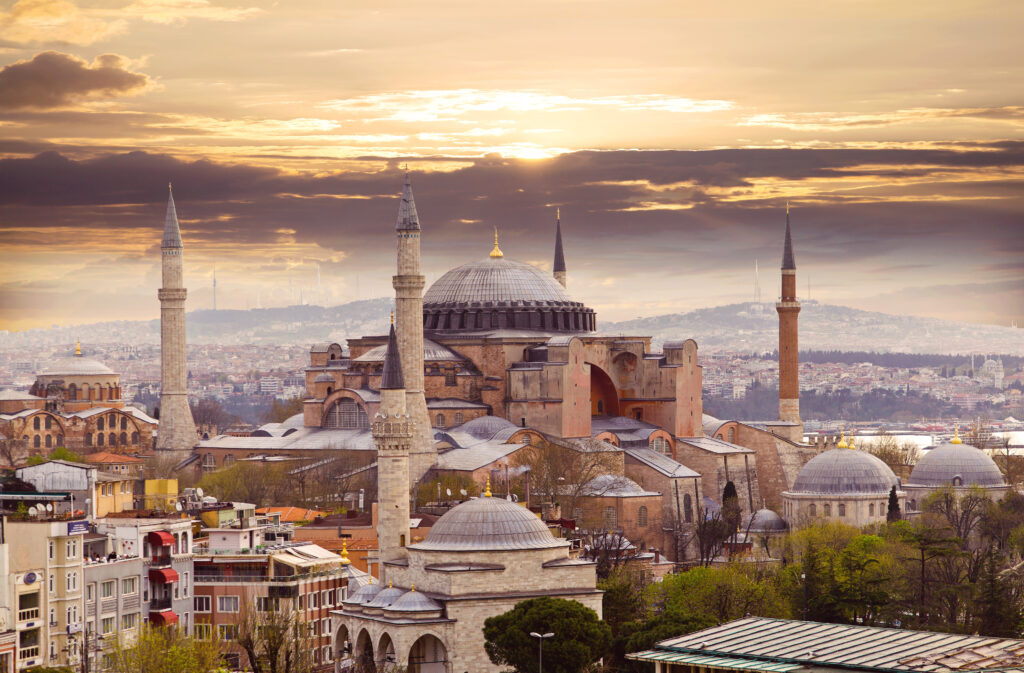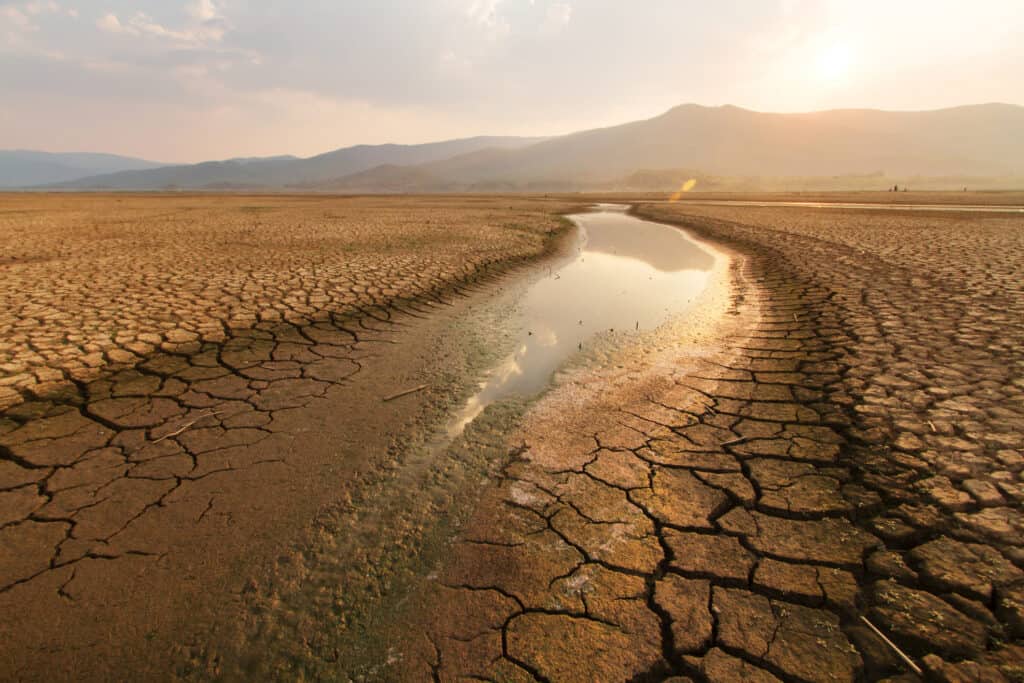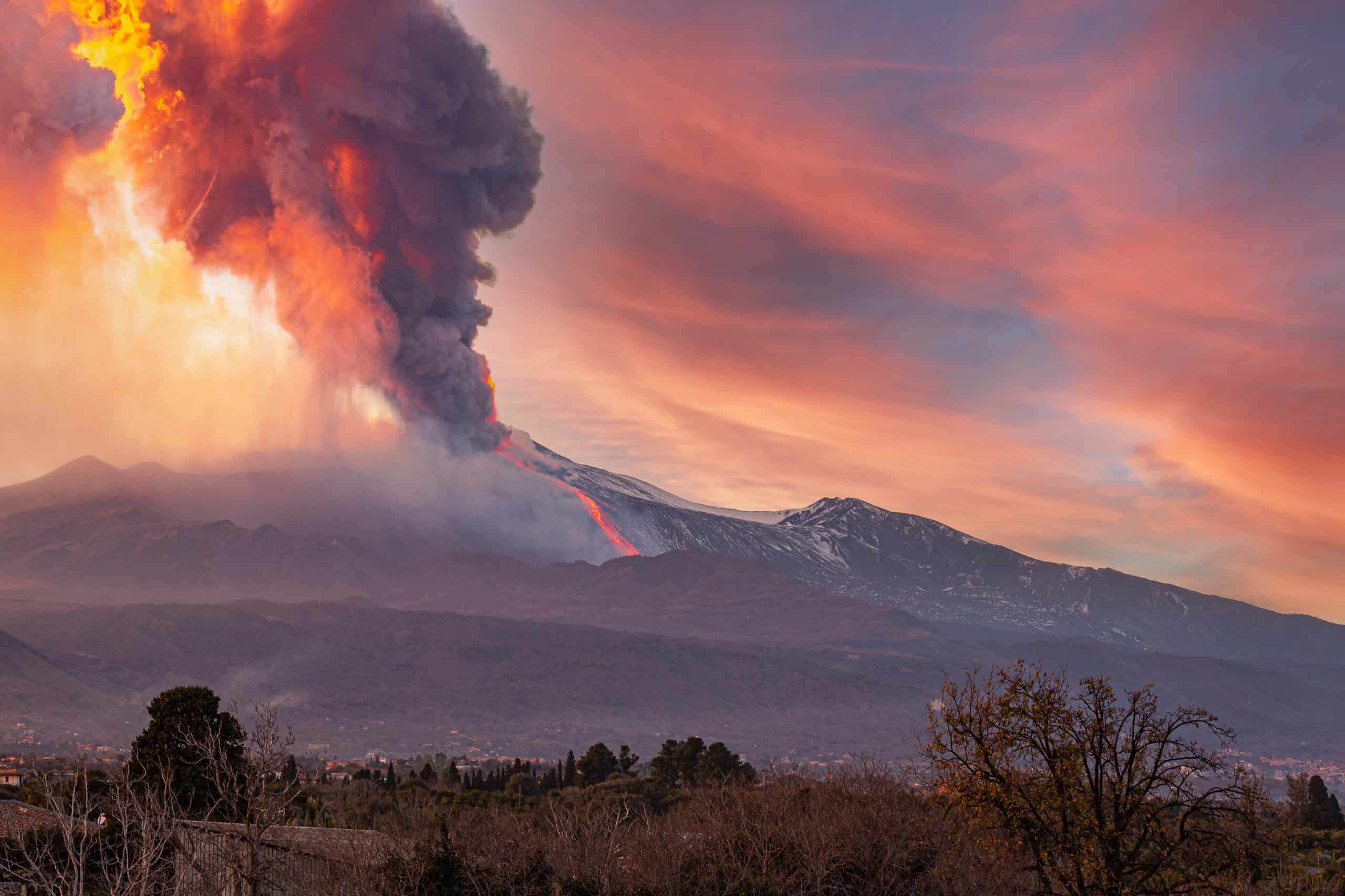The sixth century was a time of significant change and progress across the globe. In Southern England, the legendary Arthur rose to fame by triumphing over the Saxons at Mound Badon in Dorset. Meanwhile, in the Byzantine Empire, the magnificent Hagia Sophia Cathedral was constructed, and Justinian the Great brought stability after years of conflict. In China, after centuries of division and internal strife, Yang Jian emerged and reunited the empire. He founded the Sui Dynasty and ushered in a new era of prosperity. And in Rome, Pope Gregory brokered peace and secured independence for the city.
However, amidst all these remarkable achievements, one year stands out as a stark reminder of the fragility of human existence: 536 AD. This was a year that many historians consider to be one of the worst in all of human history. 536 AD was a year of darkness, despair, and unmeasurable suffering. Let’s take a closer look at why the year 536 AD is considered the worst time to ever be alive!
Unveiling the Historical Significance of the Year 536 AD
When a fog suddenly fell upon the earth in 536 AD, it instantly blanketed the Middle East, Europe, and parts of Asia in darkness and unexpectedly cold temperatures. In fact, the temperatures were so cold in China that it even snowed during the summer! Not only was its appearance a mystery, but the darkness lasted for an entire 18 months.
Procopius, a Roman-Byzantine historian at the time, described the unusual climate of 536 AD as one without any sun — almost as if the sun was forever stuck in a dark eclipse. Another Roman politician, Cassiodorus, reported that the sun’s rays were faint and had a “bluish” color. Even in the middle of the day, you could not see your own shadow.
As you can imagine, this mysterious phenomenon not only led to widespread fear of a potential apocalypse but also made it extremely difficult to grow crops. This led to widespread famine, disease, and many deaths. For example, the population of Rome alone decreased by nearly 50% due to the strange and sudden change in climate.
To make matters worse, the cause of this unusual “dark age” of 536 AD remained a mystery. However, in the 1990s, researchers began looking at tree rings from Ireland. They discovered that parts of Europe and Asia really did get quite cold in 536 AD. Some areas experienced temperatures that were up to 35 to 37 degrees Fahrenheit colder than normal! In addition, scientists led by Michael McCormick and Paul Mayewski at the Climate Change Institute of the University of Maine analyzed ice from a Swiss glacier. They discovered evidence of a huge volcanic eruption in Iceland. This eruption in 536 AD seems to have been the root cause of the worst time to be alive.

The fog caused by the massive volcanic eruption in 536 AD blocked out the sun.
©iStock.com/Jeremy Harbin
The Dark Era Begins: Understanding the Factors that Made 536 AD Challenging
The massive volcanic eruption in Iceland in 536 AD (and possibly other additional eruptions in North America) spewed an enormous amount of ash and sulfur dioxide into the atmosphere. This lethal mix of ash and gas blocked out the sun’s rays, causing temperatures all around the world to plummet. When sulfuric droplets are in the air, they reflect the sun’s rays back out into space — which means that less heat actually makes it to the Earth’s surface. Unfortunately, the effects of a volcanic eruption like this can last for several years, causing dramatic (and often catastrophic) changes to the planet’s inhabitants.
Climate Catastrophe: Exploring the Drastic Environmental Changes and Their Impact
The “volcanic winter” that began in 536 AD lasted for at least 18 months. The ash and sulfur dioxide permeating the air blocked out the sun, causing temperatures to drop like crazy, leaving much of the world in what felt like a never-ending winter. For example, temperatures in the Northern Hemisphere dropped by as much as 37 degrees Fahrenheit! That’s like going from sunny beach weather to wearing your warmest winter jacket in just a matter of seconds. Snow fell in China during the summer, and in Europe, crops failed, and animals died, causing countless people to starve. Drought and famine took over in the Middle East as well, weakening populations even in the strongest empires.
In addition to the massive Iceland eruption, the world was again rocked by two more volcanic eruptions shortly after — one in 540, and a second in 547. Researchers now call this time period the “Late Antique Little Ice Age”. They believe that it led to much of the death and decline in Europe over the next 100 years.
Social and Economic Consequences: Assessing the Ramifications of the Crisis
Famine and Disease
Even small changes in our climate can have huge consequences, as seen by the year 536 AD. As the temperatures dropped, crops started to fail in many parts of the world. People suffered from food shortages and famine, leaving them malnourished and susceptible to starvation and disease.
One of the worst consequences was the Justinian Plague — the first wave of the famous plagues in Europe. This terrible event killed 50 million people from 541 to 549 AD. Europeans were already weak and had very few resources due to the sudden environmental changes. So, the Justinian Plague spread dangerously fast through Roman Egypt, the Mediterranean Basin, Europe, and the Near East. It hit the Sasanian Empire and the Byzantine Empire with great force — particularly in Constantinople, where it killed between one-third to one-half of the population. Unfortunately, however, the situation was far from over.

This is Hagia Sophia in Istanbul, though Constantinople was the imperial capital in 536 AD.
©LALS STOCK/Shutterstock.com
Political Conflicts
The crop failures and famines in 536 AD led to social unrest and political instability, further impacting why it was the worst time to be alive. In some places, entire societies collapsed because they didn’t have enough resources to care for their people. To make matters worse, mosquitoes and other disease-carrying insects survived in areas where they normally wouldn’t be found due to the cooler temperatures. This led to the further spread of diseases in communities that were not at all prepared for them.
Consequently, all of this had an enormously negative impact on the economy that lasted for many years. For example, several tribes decided to journey eastward toward China, likely searching for better grazing lands because food was becoming scarce. However, this caused conflicts with the established powers in Northern China. In addition, the steppe populations eventually teamed up with the eastern Romans and together brought down the Sasanian Empire in Persia.
Further south in the Arabian Peninsula, the climate was much different, with more rain than usual. This meant that more plants could grow, helping to sustain larger herds of camels. According to a team of researchers from the Swiss Federal Research Institute at Birmensdorf, the sudden increase in these resources may have played a huge role in the expansion of the Arab Empire in the Middle East.
The enormous number of deaths caused by famine, cold temperatures, and the Justinian Plague also contributed to the eventual collapse of the Roman Empire. Some historians hypothesize that these factors may have also influenced the collapse of the Sassanid Empire, the Gupta Empire, and even the fall of Teotihuacán in Mexico.

It’s possible that the events of 536 AD contributed to the decline of the incredible empire of Teotihuacán.
©clicksdemexico/Shutterstock.com
Legacy and Lessons: Reflecting on the Historical Significance of the Worst Time to Be Alive
The volcanic eruption(s) in 536 AD that caused the dense fog and subsequent temperature drops illustrated just how vulnerable Earth is to climate change. Although 536 AD was the worst time to be alive due to endless suffering and heartache, there is a great deal we can learn from its painful legacies.
Mitigating the Effects of Climate Change
Today, we are facing our own modern climate change — but this time, much of it is caused by humans rather than nature alone. However, that also means that we can help prevent terrible outcomes and prepare ourselves for potential climate disasters.
For example, climate change today is largely driven by human activities like burning fossil fuels and deforestation. So, a key step is to reduce our emissions. By decreasing our carbon footprint, we can slow down the pace of climate change, helping to protect the planet. This can also give us more time to prepare for potential climate disasters.
However, there are many climate disasters already occurring today. So, another crucial step is to mitigate the effects of climate change. For example, scientists are working to develop drought resistance crops to ensure food security in areas that experience water scarcity. In addition, we can help support efforts to protect and preserve important species that keep Earth’s ecosystems in balance.

Emissions released by human activities trap the heat of the sun, causing the Earth to warm quickly.
©piyaset/Shutterstock.com
Resilience and Adaptability
Although 536 AD was the worst time to be alive, it also showcased the remarkable resilience of human societies. Despite facing extreme adversity, many people found ways to survive and rebuild.
However, it’s important to recognize that resilience isn’t just about bouncing back from adversity — it’s also about adapting to change and thriving in the face of uncertainty. To do this, we need to foster strong communities that can support each other through difficult times. In addition, we can also invest in education and innovation. By equipping people with the skills and knowledge they need to succeed in an ever-changing world, we can ensure that our societies remain agile and adaptable.
Interconnectedness and Global Cooperation
One of the most remarkable things about 536 AD is that a single disaster affected people from all across the globe. This is a powerful reminder that our world is intricately interconnected. As we face monumental challenges like climate change and other global issues, it’s clear that we cannot solve them alone. We need to work together as a global community to find solutions and take action.
This also means that we need to recognize that we have an important role to play in creating a sustainable future for our planet and its inhabitants. It’s extremely important to address environmental challenges, as well as work together to create a world where everyone has access to basic human rights like food, shelter, and healthcare.
Thank you for reading! Have some feedback for us? Contact the AZ Animals editorial team.








